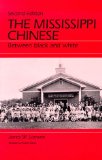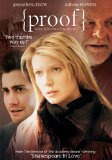“The Archaeology of Equality and Inequality”: A Look at the Chinese Population in the Mississippi Delta
October 29, 2010Posted by Anthropology Times under Archaeology, Cultural Anthropology | Permalink |
The Archaeology of Equality and Inequality
Annual Review of Anthropology
Vol. 18: 369-399 (Volume publication date October 1989)
R Paynter
In lieu of an abstract, the publisher reproduces the first page of the article. (Link)
While reading the discussion of the relationship between complexity and inequality in “The Archaeology of Equality and Inequality,” I began to think about a cultural dynamic that existed among black, white and Chinese in my native region, the Mississippi Delta, where grocery stores frequented by black residents in the area were owned and operated by Chinese residents. Robert Paynter summarizes the discussion thusly:
The relationship of complexity and inequality produces one of the great divides in social theory. Some theories hold that forces creating social differentiation–such as innate biological differences, naturally occurring ecological variation, geographical isolation, the productive efficiencies gained from the division of labor, etc–entail differential access to resources, and thereby result in inequality. Others see social differentiation arising from the reproduction of social equality–as in the proliferation of differences in systems of reciprocal exchange–or in the reproduction of social inequality–as in the use of divide-and-conquer strategies to maintain political and economic control. Neoevolutionists work within the theories that derive inequality from complexity.
I thought that the dynamic in the Delta was a clear example of inequality reproducing inequality. Firstly, I grew up with this dynamic. I lived it. Secondly, I had researched this subject in preparation for writing a screenplay several years ago and the sources I came across at that time supported my view. (Yes, it is quite impossible to live in Southern California for any length of time without eventually working on a screenplay or a treatment for a screenplay.) When I searched the net recently in preparation for writing a blog post on this subject, I found an article (several actually) that clearly has a more neoevolutionist approach to the Delta dynamic. Take a look at how two authors, one from each side of the divide, discuss the circumstances that brought Chinese settlers to the Mississippi Delta. John G. Thornell writes the following in Southeast Review of Asian Studies, Annual (2008):
The factors associated with the presence of a Chinese population in the Delta can be traced to the end of the Civil War in 1865. The war afforded freedom to four million slaves who had been the cornerstone of an agricultural economy. Planters, faced with the loss of the core of their labor force, responded by experimenting with foreign labor. Chinese and, later, Italians were recruited as part of this experiment.
Labor conventions were held to discuss the possibility of recruiting Chinese workers. In June 1869, at a meeting in Pine Bluff, Arkansas, cotton planters organized the Arkansas River Valley Emigration Company. Its purpose was to attract Chinese labor, who could be obtained in “great numbers and at cheap rates, and made efficient in the cultivation of cotton, and are proof against the malaria of the climate” (Cohen 1984, 78). (link)
So, a labor shortage resulted in an effort to recruit Chinese workers. An extra layer of complexity, differentiation, stratification came about in an effort to solve an agricultural problem, a production problem. I believe the writer above is a historian, but the theoretical position is the same as that Paynter ascribes to archaeologists in 1989: “…most archaeologists have ignored the powerful drive towards differentiation inherent in socially unequal relations(113), instead seeking nonsocial, external sources of heterogeneity and, hence, social complexity.” Paytner goes on to write that “in the past 15 years, advances in methods, detailed culture histories, and new theories have called into question this subsumption of inequality within complexity.” Given her attention to sources, Vivian Wu Wong’s recounting of the arrival of Chinese settlers to the Delta appears to rely more heavily on information derived from original research than does Thornell’s:
Central to this development of the Chinese community in Mississippi was the social and economic relationship which grew between the Chinese and blacks. Many among the southern elite attempted to replace black labor with Chinese coolies, so as to undermine the growing political power of freed blacks (7). Loewen argues that Chinese immigration was encouraged in order to increase “white political power by displacing voting Negroes; for the Chinese. . . would not vote” (8). At the time, Powell Clayton, Reconstruction Governor of Arkansas, believed that
the underlying motive for this effort to bring in Chinese laborers was to punish the Negro [sic] for having abandoned the control of the old master, and to regulate the condition of his employment and the scale of wages to be paid him (9).
Both the Chinese in California, as well as the Chinese in Mississippi, played significant roles in the economic development of American capitalism. One distinct difference however was the fact that Chinese in the South were specifically brought in, as Loewen describes, to displace black labor. One must therefore examine the role that the Chinese played in industries which relied heavily upon black labor, to understand the ways in which the Chinese contributed to the southern economy. (link)
 Wong’s recounting fits more with an inequality reproducing inequality model and more with my experience. Wong quotes James Loewen, a source with which I am familiar. I read Loewen’s, The Mississippi Chinese : Between Black and White when doing background work for my screenplay. Loewen, a sociologist, did original research concerning the Chinese population in the Delta. Thornell also references Loewen but mainly to take “Between Black and White” from the title. Wong and Thornell reference many of the same sources but they do so in light of their differing perspectives. Might the more neoevolutionist recounts of Chinese presence in the Mississippi Delta illuminate Paynter’s statement that an “increasing number of practitioners now suspect that the relationship between complexity and inequality as traditionally conceived is at best a case of the tail–and possibly the tale–wagging the dog”?
Wong’s recounting fits more with an inequality reproducing inequality model and more with my experience. Wong quotes James Loewen, a source with which I am familiar. I read Loewen’s, The Mississippi Chinese : Between Black and White when doing background work for my screenplay. Loewen, a sociologist, did original research concerning the Chinese population in the Delta. Thornell also references Loewen but mainly to take “Between Black and White” from the title. Wong and Thornell reference many of the same sources but they do so in light of their differing perspectives. Might the more neoevolutionist recounts of Chinese presence in the Mississippi Delta illuminate Paynter’s statement that an “increasing number of practitioners now suspect that the relationship between complexity and inequality as traditionally conceived is at best a case of the tail–and possibly the tale–wagging the dog”?
Both Thornell and Wong discuss the case of Lum v. Rice, a case brought in 1924 by a Chinese American after her child was prohibited from attending the white school (under separate but equal, Plessy v. Ferguson). I lived in Rosedale, Mississippi, the town in which the school was located (but much later than 1924). The Supreme Court decided that it was legal for the School Board in Mississippi to prohibit Wong’s attendance at the white school, upholding a decision by the Supreme Court of Mississippi. Wong thought the decision hinged on the ambiguity that could result as regards children of mixed black and Chinese heritage:
However, Cohn points out that the “condition” that was attached to the admission of Chinese children to white schools, reveals the underlying fear that the white community had with admitting Chinese children into white schools. Stating that the Chinese “themselves must see to it that no children of Chinese-Negro blood apply through their community” suggests that Whites were not so much worried about admitting Chinese children into white schools as they were in admitting black children (24).
Thornell does not discuss children of mixed heritage when noting the establishment of Chinese mission schools:
Even in the face of the Gong Lum decision, the Chinese rejected the black schools. Instead, they partnered with the white churches in which they had become members. These churches offered another post-Gong Lum alternative: the establishment of Chinese mission schools in some Delta communities.
Thornell emphasizes the practical nature of the decision to establish the mission schools. Loewen makes note of the fact that the Chinese population in Mississippi were careful to exclude children of mixed African and Chinese heritage from participation in the Chinese community and that these children were barred from attending Chinese mission schools. Decades later, Loewen notes that many of the local American Chinese did not approve of the mention of mixed Chinese-African children during the filming of a 1984 documentary Mississippi Triangle, “an intimate portrait of life in the Mississippi Delta, where Chinese, African Americans and Whites live in a complex world of cotton, work, and racial conflict.” Did Thornell’s omission result from a decision that discussion of children of mixed heritage was not significant or from a sensitivity to the sentiment of the American Chinese community, both, neither?
By the time my aunt was in high school in the 1980s, the school from Lum v. Rice was somewhat integrated. She attended high school with the children of the owner of one of the local Chinese-owned grocery stores (Buck’s). My memory is that they were the only Chinese American students at the school attended by black and white students. Elementary and middle schools were still heavily segregated. There were two Chinese-owned grocery stores in Rosedale at the time, Buck’s and Wong’s. Buck, the patriarch, was a lot more socially interactive with black customers than was the proprietor at Wong’s, so it’s less surprising that his children attended the integrated high school. In recent years, there has been a severe decline in the number of American Chinese in the Mississippi Delta. The formally Chinese-owned groceries in Rosedale are now owned by black residents.

